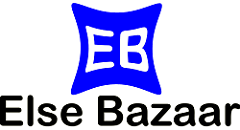Definition:
You can animate your button using CSS property and give more stylish and elegant looks. Here are the list of CSS Button Animation property:
- Hover
- Click
- Fade In and
- Ripple
See each CSS Button animation with an example. Make sure you try yourself to understand clearly.
1. Hover
Definition:
When a user put cursor over a button, the button effect should change so that the user can see it clearly and knows that the cursor is over a button.
You can change button’s background color, size and text on hover effects.
Syntax:
.button:hover
{
background-color: darkred;
color:white;
font-size: 20px;
}Source Code:
<!DOCTYPE html>
<html>
<head>
<style>
.button {
background-color: green;
color:white;
padding: 20px 20px;
text-align: center;
text-decoration: none;
margin-right:15px;
}
.button:hover {
background-color: darkred;
color:white;
font-size: 20px;
}
</style>
</head>
<body>
<h2>CSS Button Hover</h2>
<button class="button btn1">btn 1</button>
<button class="button btn2">btn 2</button>
<button class="button btn3">btn 3</button>
</body>
</html>
Output:

2. Click
Definition:
Here, you can show a clickable effect while click on the button. See an example below of CSS button clickable effect.
Syntax:
.button:active {
background-color: black;
box-shadow: 0 4px #777;
transform: translateY(8px);
}Source Code:
<!DOCTYPE html>
<html>
<head>
<style>
.button {
background-color: green;
color:white;
padding: 20px 20px;
text-align: center;
text-decoration: none;
margin-right:15px;
}
.button:hover {
background-color: darkred;
color:white;
font-size: 20px;
}
.button:active {
background-color: black;
box-shadow: 0 4px #777;
transform: translateY(8px);
}
</style>
</head>
<body>
<h2>CSS Button Hover</h2>
<button class="button btn1">btn 1</button>
<button class="button btn2">btn 2</button>
<button class="button btn3">btn 3</button>
</body>
</html>
Output:

3. Fade In
Definition:
Fade In effect depends on the opacity of the button. To change the button fade-in effect, use the opacity from 0.0(low opacity) to 1 (high opacity).
See an example below of the button, which has 0.6 opacity initially and changed into a high opacity on mouse hover to that button.
Syntax:
.button:hover {
opacity: 1;
}Source Code:
<!DOCTYPE html>
<html>
<head>
<style>
.button {
background-color: green;
color:white;
padding: 20px 20px;
text-align: center;
text-decoration: none;
margin-right:15px;
opacity: 0.6;
}
.button:hover {
background-color: darkred;
color:white;
opacity: 1;
}
</style>
</head>
<body>
<h2>CSS Button Fade In</h2>
<button class="button btn1">btn 1</button>
<button class="button btn2">btn 2</button>
<button class="button btn3">btn 3</button>
</body>
</html>
Output

4. Ripple
Definition:
You can also display a button that shows the ripple effect when clicked on it. To display a ripple effect on the button, use .button:active:after { } property.
Syntax:
.button:active {
background-color: #ffffff;
background-size: 100%;
transition: background 0s;
}Source Code:
<!DOCTYPE html>
<html>
<head>
<style>
.button {
background-color: green;
color: white;
padding: 20px 20px;
text-align: center;
text-decoration: none;
margin-right:15px;
background-position: center;
opacity: 0.6;
transition: background 0.8s;
}
.button:hover {
opacity: 1;
background: green radial-gradient(circle, transparent 1%, green 1%) center/25000%;
}
.button:active{
background-color: #ffffff;
background-size: 100%;
transition: background 0s;
}
</style>
</head>
<body>
<h2>CSS Button Ripple</h2>
<button class="button btn1">btn 1</button>
<button class="button btn2">btn 2</button>
<button class="button btn3">btn 3</button>
</body>
</html>
Output:
It is not possible to show the ripple output effect on the screenshot, so please click on “TRY IT YOURSELF” to see the ripple output.
Donate to support writers.
You may be interested in the following topics:
- CSS Button On Image
- CSS Button Animation
- CSS Button Groups
- CSS Disabled Button
- CSS Button Shadows
- CSS Hoverable Buttons
- CSS Button Borders
- CSS Button Shape
- CSS Button Width
- CSS Button Font Sizes
- CSS Button Colors
- CSS Buttons (All Properties)
